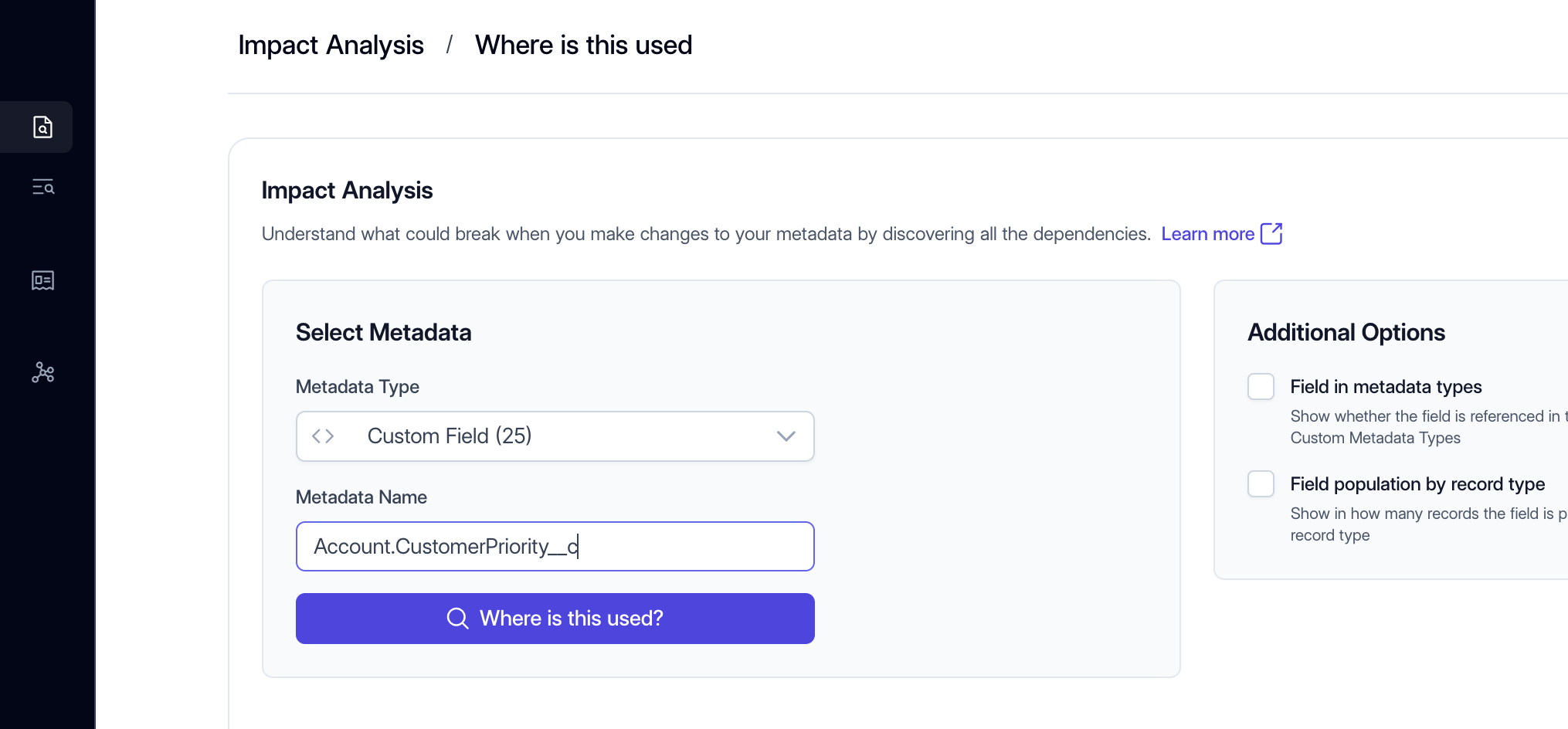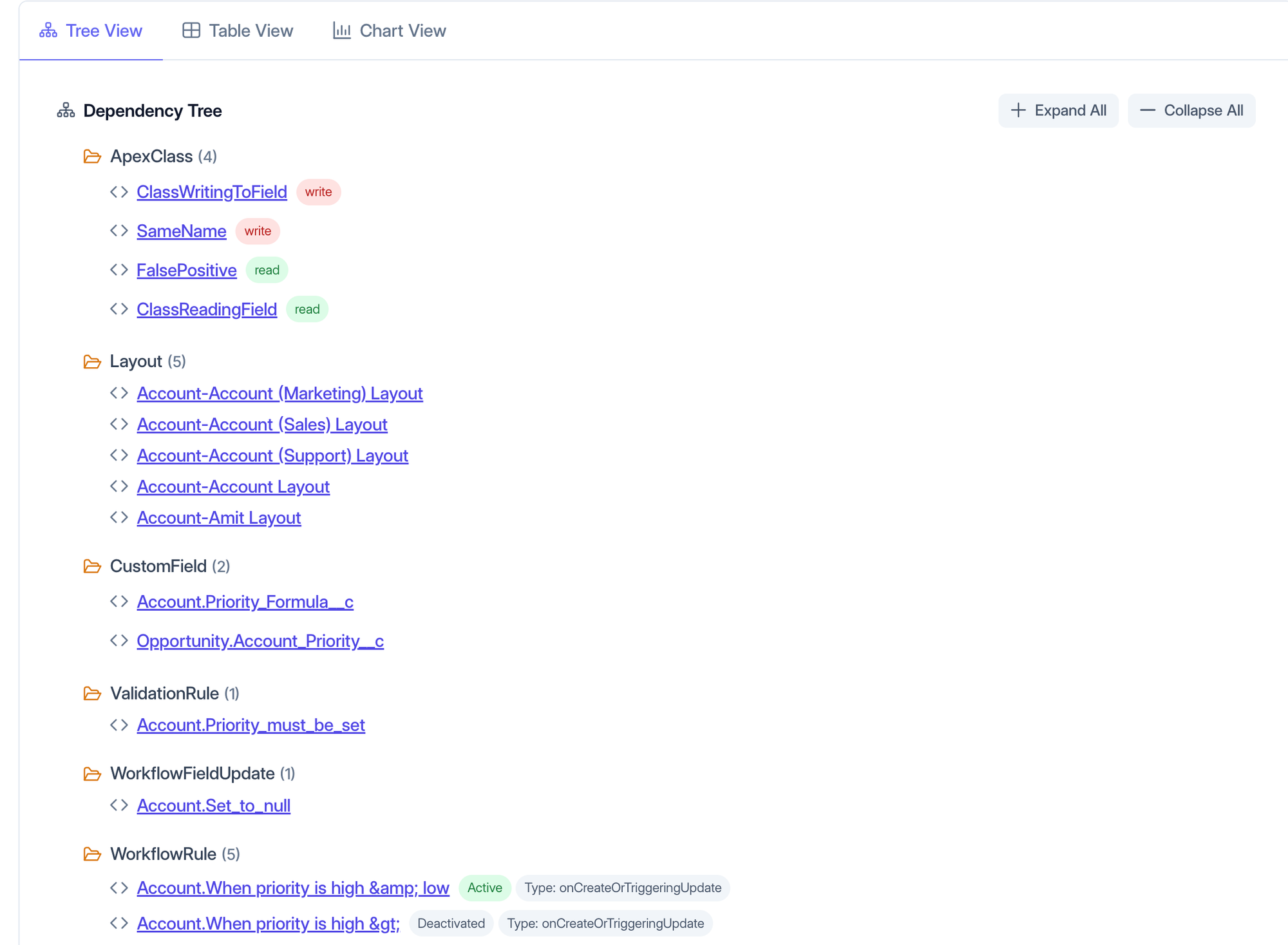In my original definition of a "Clean Org", I said that changes to the org are ideally predictable, there are no surprises. The opposite is that every time you change something, some other part of the org breaks (by surprise!).
One way to help understand the potential "blast radius" of a change (i.e what could break) is with impact analysis.
Let me explain what that is.
The impact of what?
Of making changes! That’s what we do in Salesforce orgs: we make changes.
- We change fields
- We update flexipages
- We create new flows
- We deprecate old fields (do we…?)
- We create new objects
Any change has the potential to create side effects. For example:
- If you add a new Validation Rule, existing Flows or Apex classes may start failing.
- If you rename a picklist value from
HightoHighest, reports, formulas, and any conditional logic tied to that value will break.
Basically, everything we do has an impact. That impact may be small and insignificant, or it may be big and career-defining.
So, with that said, here’s a proper definition:
Once you understand the potential impact, you can move forward with confidence. In other words, you can prepare and make sure the impact is minimized or non-disruptive.
Once you understand the potential impact, you can move forward with confidence.
And what about Dependency Analysis?
Dependency Analysis is closely related. The impact of a change comes from the dependencies (or coupling) between the component you’re changing and other components.
Here’s an example:
Imagine you have a custom field called CustomerPriority__c that’s used heavily across the org. That usage creates dependencies.
- If the field is referenced in an Apex class, that class depends on the field. You can’t delete it because of that reference.
- If you update the behavior of the field (say, renaming a picklist value), the Apex class logic may be affected too.
In short, dependencies between components are what cause impacts in the first place.
How do you do impact analysis?
Well, obviously, with HappySoup!
In this example, I want to see what's the impact of making changes to the CustomerPriority__ field.

With just a few clicks, you can see all the metadata where a field is used.

This shows you the potential impact. Every component in the tree depends on the custom field, so any change to its behavior (making it required, deleting a picklist value, etc.) has the potential to affect those components.
So that’s it?
There’s a bit more to impact analysis, but I’ll cover that in another article. For now, you can explore all the impact analysis features HappySoup offers in our knowledge base.

